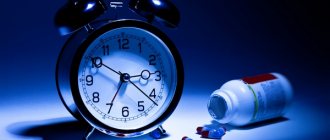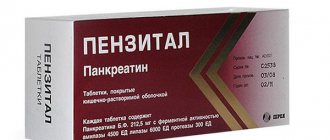Anonymously
Around the clock
Attention! The material contains information about substances, the use of which can cause serious harm to your health!
Article prepared by an expert
Knoblokh Ekaterina Sergeevna
Leading psychologist. Medical psychologist, full member of the OPPL, emotional-imaginative therapist. More than 10 years of experience working with addicted people in outpatient and inpatient rehabilitation programs.
Read in the article:
- Coaxil in medicine
- Signs of using coaxil
- Health implications
- Development of addiction
- The danger of overdose with coaxil
- Addiction treatment
Coaxil is a medication that helps in the fight against depression. It has an energizing effect, provokes an increase in activity and euphoria, similar to the effect of heroin. The product has a low cost, which makes it popular among addicts. However, subsequently, abuse of this drug leads to severe damage to internal organs and personality degradation. In this article we will tell you about the signs of using Coaxil, the health consequences of using the drug and methods of treating addiction.
Pharmacological properties
Coaxil is an antidepressant from the group of tricyclic derivatives. The mechanism of action of Coaxil is associated with an increase in the reverse neuronal uptake of serotonin by neurons of the cerebral cortex and hippocampus. Increases the spontaneous activity of pyramidal cells and increases the rate of their recovery after functional suppression. In terms of the nature of its effect on mood disorders, it occupies an intermediate position between sedative and stimulant antidepressants. When using Coaxil, there is a decrease in somatic symptoms (in particular, pain in the epigastric region, nausea, dizziness, headache, palpitations, sensations of heat, muscle pain). Coaxil normalizes behavior and has a positive effect on character disorders in patients with chronic alcoholism during the abstinence period. The drug does not have a negative effect on memory, sleep and the ability to concentrate, and does not affect the functions of the cardiovascular system. Does not have anticholinergic effects and is not addictive. In case of renal failure, as well as in patients over 70 years of age and in persons receiving constant drug therapy for chronic diseases, T1/2 increases by 1 hour. In case of liver failure, the pharmacokinetic parameters of the drug do not change significantly (even in the presence of liver cirrhosis in patients with chronic alcoholism).
Health implications
Coaxial addicts' health quickly deteriorates. The person experiences severe headaches, rapid deterioration of vision, and literally before the eyes of the addict, teeth affected by caries turn black. Intoxication of the body worsens overall health. Injection of the drug provokes damage to the walls of blood vessels, thrombosis and purulent lesions of muscles and tissues. This often ends in limb amputation or death.
Side effects
Side effects when using the drug Coaxil can occur from the digestive system: epigastric and abdominal pain, dry mouth, decreased appetite, nausea, vomiting, constipation, flatulence. From the side of the central nervous system: sleep disturbances, drowsiness, nightmares, asthenia, dizziness, headache, fainting, tremor, feeling of heat. From the cardiovascular system: tachycardia, extrasystole, chest pain. From the respiratory system: discomfort when breathing, sensation of a “lump in the throat.” Other: muscle pain, lower back pain. Side effects occur rarely and are fleeting.
Signs of using coaxil
If you are particularly sensitive to the components of the drug, Coaxil causes not only addiction, but also withdrawal symptoms, even if a person uses the drug for therapeutic purposes. Most often, the condition manifests itself in the appearance of insomnia, the development of depression, and a strong desire to take a new dose to alleviate the condition. The following symptoms are also observed, which may indicate a person has taken Coaxil:
- Severe pain in the body.
- Nausea and vomiting.
- Depressed mental state.
- Insomnia.
- Psychosis and suicide attempts.
While taking other antidepressants in parallel, the symptoms worsen and the addict, who is unable to withstand the withdrawal syndrome, breaks down, increasing the amount of the drug consumed.
When taking dangerous doses of Coaxil, the following symptoms are observed:
- Decreased vision and red eyes.
- Sudden mood swings: from euphoria to psychosis.
- Anorexia or asthenic syndrome.
- Crushing teeth, rapid development of caries.
- When administered by injection, non-healing wounds appear on the extremities.
Buy PKU Coaxil film-coated tablets 12.5 mg No. 30 in pharmacies
Instructions for use Coaxil Dosage forms tablets 12.5 mg Synonyms There are no synonyms. Group Antidepressants - non-selective inhibitors of neuronal uptake International nonproprietary name Tianeptine Composition Active substance - tianeptine. Manufacturers Servier Laboratories (France), Servier Laboratories Industry (France), Servier Laboratories, packaged by Moscow Pharmaceutical Factory (France) Pharmacological action Has an antidepressant effect. Stimulates the reuptake of serotonin by neurons of the cerebral cortex and hippocampus. Increases the spontaneous activity of pyramidal cells of the hippocampus and accelerates the recovery of their potential after functional inhibition. Improves mood, relieves motor retardation, and increases the overall tone of the body. Promotes the disappearance of somatic complaints caused by anxiety and mood changes. Effective in the treatment of major depression and depression in bipolar disorder with or without signs of melancholia, and in depressive disorders of a neurotic and subpsychotic level. Shown to be effective in the treatment of late-life depression, incl. anergic, psychogenic and somatized. Tianeptine is effective in the treatment of depressive disorders during menopause in women. Effective in the treatment of patients with gastric and duodenal ulcers in varying degrees of exacerbation with comorbid mental disorders with a predominance of anxiety or depressive symptoms. In patients with chronic alcoholism, it normalizes behavior during the period of abstinence, helps reduce anxiety and depressive symptoms, exhibits vegetative stabilizing activity, and reduces pathological craving for alcohol. Effective for post-withdrawal disorders (anhedonia syndrome) in heroin addiction. After oral administration, it is quickly and completely absorbed from the gastrointestinal tract. Binding to blood proteins is high. It is evenly distributed in the body and easily passes through histohematic barriers, incl. through the GEB. Excreted by the kidneys. Side effects From the nervous system and sensory organs: dizziness, headache, insomnia, daytime drowsiness, decreased concentration, nightmares, asthenia, lipothymia, fainting, tremor. From the cardiovascular system and blood (hematopoiesis, hemostasis): tachycardia, extrasystole, angina pectoris, chest pain. From the respiratory system: discomfort when breathing, difficulty breathing, spasm of the larynx, sensation of a “lump” in the throat. From the gastrointestinal tract: dry mouth, anorexia, epigastric and abdominal pain, nausea, vomiting, constipation, flatulence. Other: feeling of heat, flushing of the face, pain syndrome (myalgia, pain in the lumbosacral spine). Indications for use Depression and depressive states of any etiology. Contraindications Hypersensitivity, pregnancy, breastfeeding, childhood and adolescence (up to 15 years). Method of administration and dosage : Orally, before meals, adults 12.5 mg. 3 times a day, for persons over 70 years of age and patients with renal failure - 2 times a day. Overdose Symptoms: Increased side effects. Treatment: drug withdrawal, gastric lavage; monitoring of the functions of the heart, lungs, kidneys, and metabolic processes is necessary; symptomatic therapy (if necessary, mechanical ventilation, correction of renal dysfunction, metabolic disorders, etc.). Interaction Incompatible with MAO inhibitors (possible collapse, sudden increase in blood pressure, hyperthermia, convulsions and death). Special instructions Constant monitoring of patients is required. When providing emergency surgical care, strict monitoring of the patient's condition during surgery is necessary. You should refrain from engaging in potentially hazardous activities that require increased attention and speed of psychomotor reactions. Storage conditions List B. At a temperature not exceeding 30 °C.
Chemical composition of coaxyl and history of occurrence
The main substance on which the activity of coaxil is based is Tianeptine, which has the following formula: C21H25ClN2O4S. This is a triacyclic antidepressant, which is a crystalline sodium salt. Manufacturers offer Coaxil in tablet form, but drug addicts use it intravenously to increase the effect.
Coaxil gained recognition in the 90s of the last century, when it was actively used in medicine to treat depression and other mental abnormalities. For a long time it was believed that this medicine was harmless, until it became clear that it was a drug that caused irreversible consequences in the human body. Many drug addicts realized that Coaxil was cheaper than natural opiates, so some heroin addicts chose it, which many of them later regretted, since the consequences of Coaxil abuse turned out to be much more serious.
In the Russian Federation, this coaxil was recognized as a narcotic substance only in 2010, when control over its circulation was introduced. Meanwhile, you can buy it with a prescription, and this has never stopped drug addicts, for whom getting a prohibited drug is not a problem. During the time when Coaxil was freely available, many Russians and drug addicts from other countries had already become hooked on it.
Development of addiction
Coaxil causes addiction, which manifests itself both physically and psychologically. Having become accustomed to one dose of the drug, the body requires a new one. If a person stops using Coaxil, it is difficult for the body to function as before and withdrawal syndrome occurs. Mental dependence develops even from a short period of using Coaxil. Only professional psychocorrection and total refusal to take the drug will help here. According to statistics, coaxial addicts live three times less than heroin addicts. This is caused by severe damage to health.
Coaxil in medicine
What is Coaxil from a doctor’s point of view? This is a drug that acts on the central nervous system and increases the reverse serotonin uptake by neurons of the cerebral cortex. Its pyramidal cells are activated under the influence of the substance, and the process of their restoration in case of functional damage and suppression is accelerated.
Coaxil is a tranquilizer produced by French pharmacists (in the West it is known as Coaxil). Its main active ingredient is tianeptine sodium, which is a tricyclic antidepressant. Magnesium stearate, sucrose, titanium dioxide and other components are used as a supplement. Analogues and synonyms of the drug - Tianeptine or Servier.
The standard dose prescribed by doctors is three tablets for 24 hours. In severe cases of illness, it is increased to eight per day. Taking a large dose of the drug is allowed for no more than 5 days in a row, and under the strict supervision of specialists. The drug is not prescribed to patients under 15 years of age.
The instructions for Coaxil indicate that addiction to it does not develop, but this statement is true only with the strictest adherence to the doctor’s recommendations. The use of the medicine must be controlled, the duration of treatment must be limited. In practice, patients take pills with a strong psychotropic effect for a year, two or more. There are no serious side effects when used correctly, which further “lulls the vigilance” of people who begin to take the drug uncontrolled.
What happens in the body of a drug addict
When taking the first dose of the drug, you should understand that Coaxil is a powerful drug that is persistently addictive. If you do not consult a doctor in time, irreversible processes will begin in the body. Among them are:
- blockage of veins, which leads to thrombosis and death;
- infection of the body in case of failure to comply with basic hygiene standards during intravenous use;
- gangrene and amputation of limbs as a result of blood poisoning;
- tooth decay;
- loss of vision.
In addition to physical abnormalities, experienced drug addicts experience serious mental disorders. Drug addicts, especially in the absence of the next dose, behave unpredictably, they can harm themselves and others. Think about whether you need gangrene and whether you value your teeth before you take the dangerous path of drug addiction.
The danger of overdose with coaxil
Coaxil is considered one of the most dangerous drugs. It is difficult to alleviate withdrawal from this drug even with the strongest opiates. In case of prolonged use of Coaxil, a person becomes inadequate and dangerous to others.
The most pronounced consequences of using Coaxil:
- Microbial contamination.
- Blockage of veins, formation of blood clots.
- Blood poisoning, development of gangrene.
- Tooth decay in 4 weeks.
- Loss of vision.
How to quickly remove Coaxil from the body
To remove the drug Coaxil, its breakdown products and toxins, special children's programs are used, aimed at removing biochemical dependence.
For this, the patient is given special infusion therapy. To achieve sustainable results and prevent a return to drug use, it is recommended to complete a full course of rehabilitation in a specialized drug treatment clinic. Removing psychological dependence on medication and the patient’s social adaptation minimizes the risk of psycho-emotional disorders and instills faith in victory over addiction.
Call by phone
Is Coaxil a drug or not?
Coaxil - what is it, a useful and harmless medicine, or a narcotic? Using the drug strictly as prescribed by a doctor and for a limited period of time has a positive effect. But patients sometimes find it difficult to stop taking it - they are attracted by the “benefits” indicated in the descriptions of the drug and they strive to constantly feel its effect, increasing the dosage and taking the drug for several years in a row. In this case, a severe addiction is formed, with symptoms similar to heroin.
After taking it, the patient feels a surge of strength, euphoria, “loves the whole world” and becomes energetic. But when the drug is discontinued, severe depression develops and sleep disorders begin. Feeling a loss of strength and unpleasant symptoms, the patient takes another pill - this is how drug addiction develops. Sometimes people, especially older people, do not even notice this, believing that they are simply maintaining their strength with medicine.
Addiction treatment
Coaxial addiction is quite difficult to treat. The craving for the drug persists for several years. If we take into account the fact that Coaxil cannot be combined with any antidepressants, then the selection of drug therapy becomes difficult. Treatment is selected individually, based on the psychological and physical state of health of the patient. The longer the period of drug use, the longer the rehabilitation will take, since even heroin addiction cannot compare with the severity of the consequences of using Coaxil. However, with timely access to specialists, the chances of recovery increase.
Help a loved one cope with addiction to Coaxil, contact the Zdravnitsa professional treatment and rehabilitation center. Make an appointment with a narcologist by calling the 24-hour hotline: 8 (800) 200-27-23.




